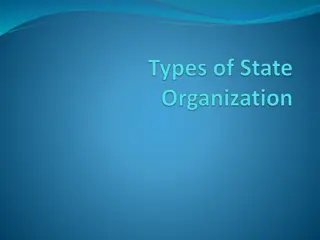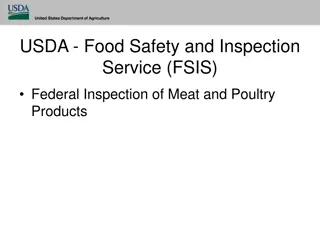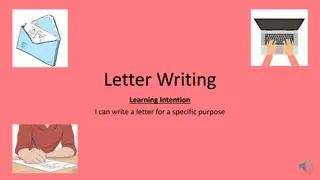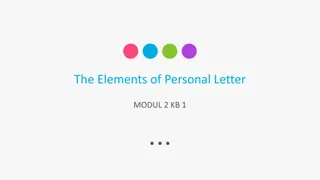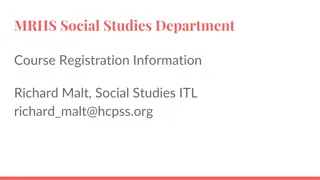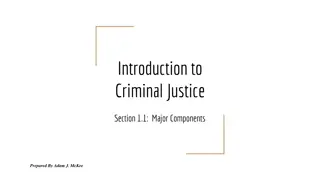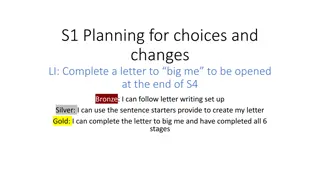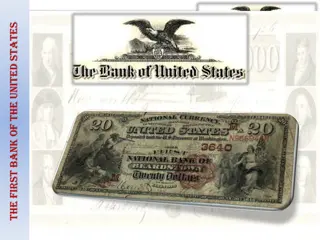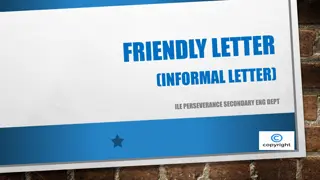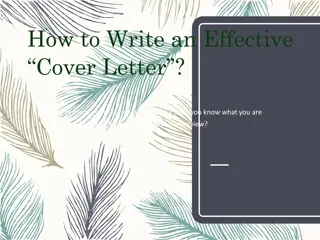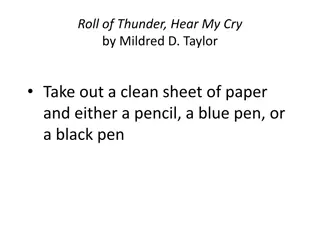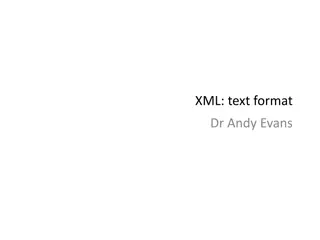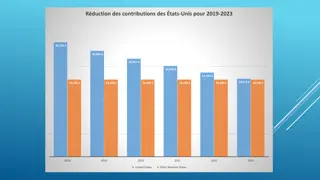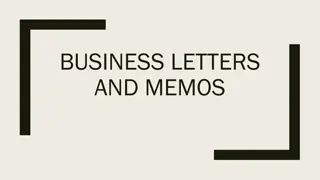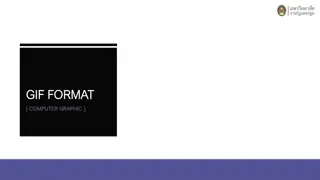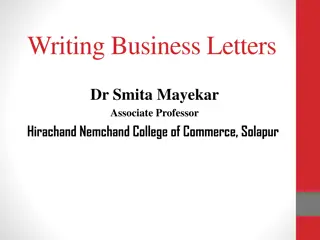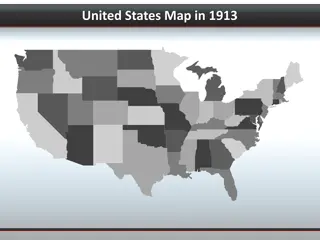Common Letter Formats in the United States
In the United States, three main letter formats are prevalent: Block format, Modified block format, and Simplified format. Each format has its distinct characteristics in terms of paragraph indentation, placement of letter parts, and punctuation. Block format aligns all letter parts to the left for efficient preparation and reading. Modified block format is similar to block format but allows for some traditional placement alterations. Simplified format, unlike the other two, does not include a salutation or complimentary closing. Instead, the recipient's name is integrated into the first sentence, and the signature immediately follows the body of the letter. Each format offers unique advantages based on the desired tone and formality of the communication.
Download Presentation

Please find below an Image/Link to download the presentation.
The content on the website is provided AS IS for your information and personal use only. It may not be sold, licensed, or shared on other websites without obtaining consent from the author.If you encounter any issues during the download, it is possible that the publisher has removed the file from their server.
You are allowed to download the files provided on this website for personal or commercial use, subject to the condition that they are used lawfully. All files are the property of their respective owners.
The content on the website is provided AS IS for your information and personal use only. It may not be sold, licensed, or shared on other websites without obtaining consent from the author.
E N D
Presentation Transcript
Created by Benjamin LaVictoire April 2012
In the United States, there are three major letter formats that are commonly used. Block format Modified block format Simplified format
The way paragraphs are indented The way letter parts are placed And in some punctuation
Block format is designed not only for quick and efficient preparation, but also for quick and easy reading. According to block format, each letter part should be aligned to the left.
The date and the inside address should be separated by 2 blank spaces. Every other component between the salutation and the complimentary close should receive 1 full blank space of separation. Finally, there should be 3 spaces between the complimentary close and the signature block.
Modified block format is very similar to block format. Modified block format mixes preparation speed with traditional placement of some letter parts. This format also looks more balanced on the page than block format does.
Modified block format is very similar to block format. However, the date, complimentary closing, and signature block begin toward the middle of the page. Modified block also allows for optional paragraph indention.
Unlike block and modified block, simplified format does not include a salutation. The recipient s name will typically be worked into the first sentence of the letter. Also, simplified format does not include a complimentary closing. The signature comes immediately after the body of the letter followed by the printed name which will typically be in all capital letters.
Like block format, simplified format has each letter part aligned to the left.
When choosing a letter format, take into account who your audience is and what the purpose of the letter will be. For example, because of its impersonal nature, simplified format is typically used when the audience is unknown to the writer.
Though these three formats are different, they do share some similar patterns. The different letter parts are always separated by at least one full line. The printed name is always separated from the line above by at least three blank lines to allow room for a signature.
Business Communication Today, 7th edition, 2003 Contemporary Business Communication, 1992
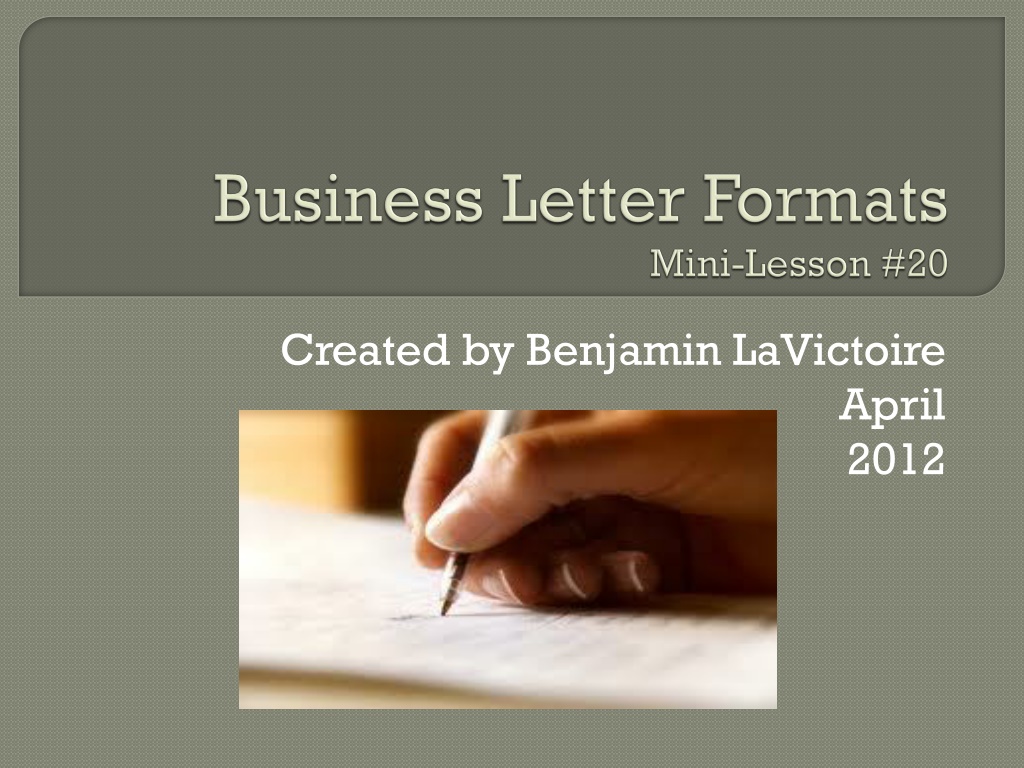
 undefined
undefined









